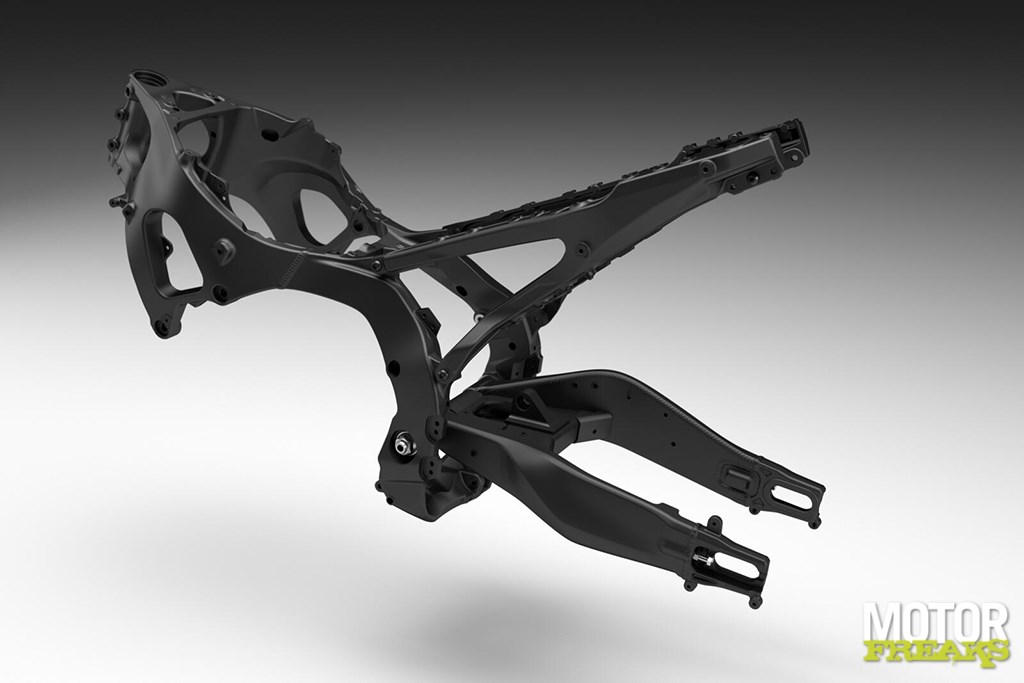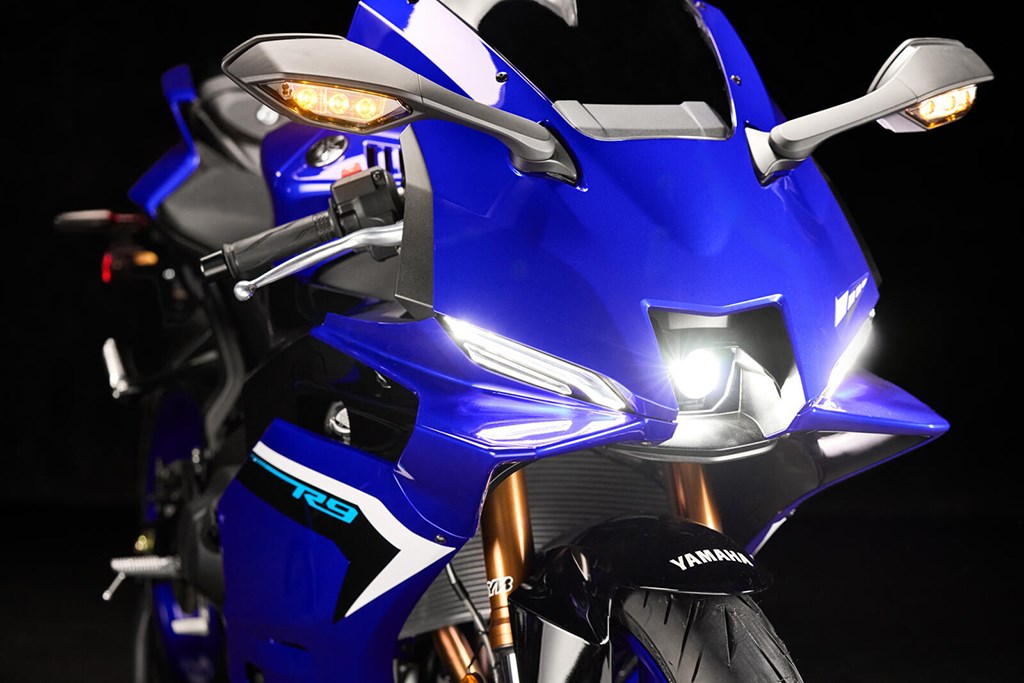Yamaha has lifted the curtains on the long-awaited YZF-R9. The R9 is the latest model of Yamaha’s R series, which started at the end of the last century with the YZF-R1, and at the same time the top model of the street series – the R1, like the R6, has only been available as a racer in Europe for some time.

The arrival of the R9 completes Yamaha’s Supersport-for-the-road story. We have said it before, the Supersport as we knew it is no more, during the credit crisis sales of the unprecedentedly popular segment collapsed completely and have never recovered since.
On the one hand because the engines had become far too extreme for the street and on the other hand because those enormous developments had also had an impact on the price tag. And all that electronics had rendered the usefulness of the 600 class obsolete. The one-litre bikes steered almost as easily and could be throttled to 600+ engines using the adjustable riding modes.
But fortunately that is changing again. The Supersport itself had not lost its popularity, only the demand for the Supersport type had changed. No more extreme bicycles that are super uncomfortable on the street and with powers that you cannot use anywhere with good decency, but bicycles that you can still use on the street.
Yamaha understood this well and launched the YZF-R7 derived from the MT-07, where the Women’s Cup is now held as a side program of the WorldSBK, after which we had to wait until Yamaha would do the same with the MT-09 and the YZF-R9 would be a fact. And then race it in the Supersport World Championship, which nowadays allows a mixed bag of models, from CBR600RR to (955cc) Panigale V2 and everything in between.
So much for the background, on to the specs of the new R9. The beating heart of the R9 is the same 890cc CP3 three-cylinder in-line engine that we already know from the MT-09 (and Tracer 9 / XSR900), equipped with YCC-T ride-by-wire throttle control. As for the specifications, Yamaha is currently keeping tight-lipped, but we don’t think they will deviate much from the 119 hp at 10,000 rpm and 93 Nm @ 7,000 rpm of the MT-09.

The CP3 engine block is incorporated as a load-bearing part in the bicycle section, the aluminum Deltabox-style frame of which has been specially developed for the R9. According to Yamaha, the new frame has better stiffness in three dimensions: torsional, longitudinal and lateral. By applying specific thicknesses, shapes and also machined holes, a balance between stiffness and flexibility has been aimed for, for a high level of feedback as well as driving comfort.
Yamaha claims a weight of 9.7 kilos for the frame and says it is the lightest frame ever used for a Yamaha Supersport model. The light frame has brought the total weight of the R9 to just 195 kilos. Ready to drive, including all fluids and full 14-litre petrol tank. That’s even one kilo lighter than the MT-09 weighs.
The styling of the R9 speaks for itself. The design is completely in line with the R7, but equipped with aerodynamic winglets on the fairing, which are smaller in shape than the winglets on the 2025 R1. Of course, that doesn’t help you on the street, but on the track it’s a different story. The winglets reduce the lift on the front wheel by 6-7% in a straight line, in combination with the front spoiler under the M-duct this effect is increased to approximately 10% in corners.

For the suspension, Yamaha has called on KYB, with a 43 mm upside down front fork at the front that is fully adjustable. The fork legs feature dual adjustment screws to adjust both high- and low-speed damping. The damping is separated, on the left the incoming damping and on the right the outgoing damping. The rear shock is fully adjustable.
Then the brakes, which are at least impressive. At the front we find two 320 mm discs with radial Brembo Stylema 4-piston brake calipers and a Brembo radial brake pump. At the rear there is a 220 mm disc with 2-piston brake caliper.
In terms of electronics, Yamaha has provided a 6-axis IMU, which controls the lean-angle dependent traction control, as well as the Slide Control and Brake Control. In terms of driving modes, you can choose from Sport, Street and Rain, supplemented with another two Custom modes and no fewer than 4 Track modes.
Almost everything can be set in the riding modes: Power Delivery (PWR), Traction Control (TCS), Slide Control System (SCS), Brake Control (BC), Back Slip Regulator (BSR), Engien Brake Management (EBM) and Front Wheel Lift Control (LIF). In addition, the R9 also has Launch Control and you have the option to switch off the ABS on the rear wheel. Of course, an up/down quickshifter is also provided.
The 2025 YZF-R9 is available in Icon Blue and Tech Blak, but you’ll have to be patient. The motorcycle is not expected to arrive in the Yamaha dealer’s showroom until the end of April next year.








– Thanks for information from Motorfreaks.